12 Essential Productivity Tools for Freelancers in 2025
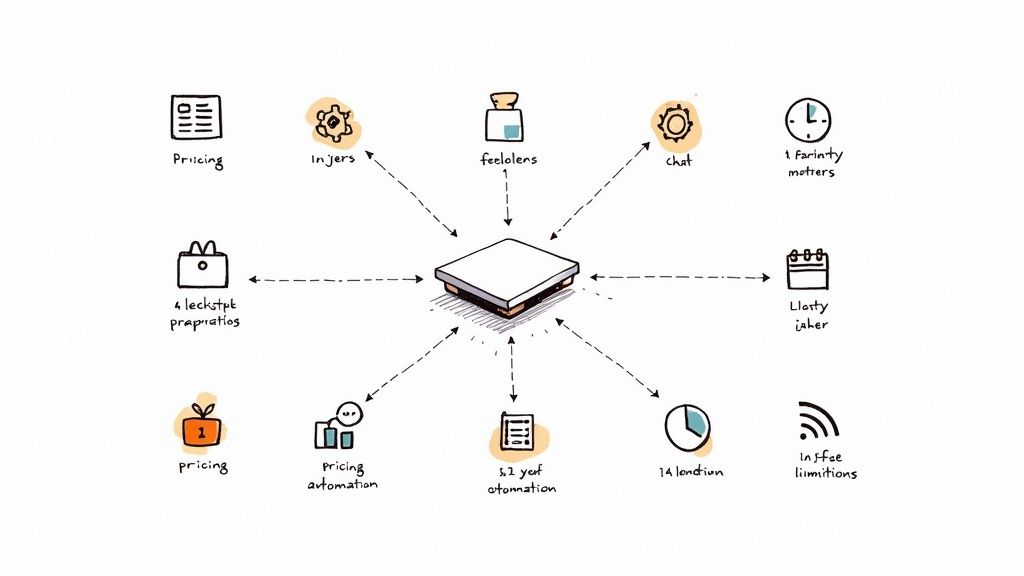
Being a successful freelancer means being your own CEO, project manager, accountant, and marketer, often all at once. The constant context-switching between tracking hours, managing client communication, and sending invoices can quickly lead to burnout and eat into your billable time. This isn’t about adding more apps to your stack; it’s about choosing the right ones to automate repetitive work and streamline core operations.
This guide dives deep into 12 essential productivity tools for freelancers, moving beyond generic feature lists to provide practical, real-world use cases. We’ll explore how platforms like Sagekit can automate meeting prep, how Notion can become your central business hub, and how Zapier can connect everything in between. Each entry includes detailed analysis, pricing information, and direct links to help you decide which tools genuinely solve your biggest workflow challenges.
Our goal is straightforward: to help you find the best platforms that give you back the time to focus on what truly matters. We will show you not just what these tools do, but how to integrate them effectively to build a more efficient and profitable freelance business. Let’s find the right solutions to help you reclaim your focus.
1. Sagekit: The AI Automation Co-Pilot
Sagekit redefines workflow automation for freelancers by replacing complex, node-based builders with a simple, natural language interface. Instead of dragging and dropping modules, you describe the task you want to automate in plain English. For example, a freelance social media manager could type, “Every Friday at 4 PM, pull performance metrics from my clients’ Google Analytics accounts for the past week, create a summary report, and email it to each client.” Sagekit’s AI translates this command into a fully functional workflow, building it on a visual canvas in real-time. This approach makes it one of the most accessible yet powerful productivity tools for freelancers available today.
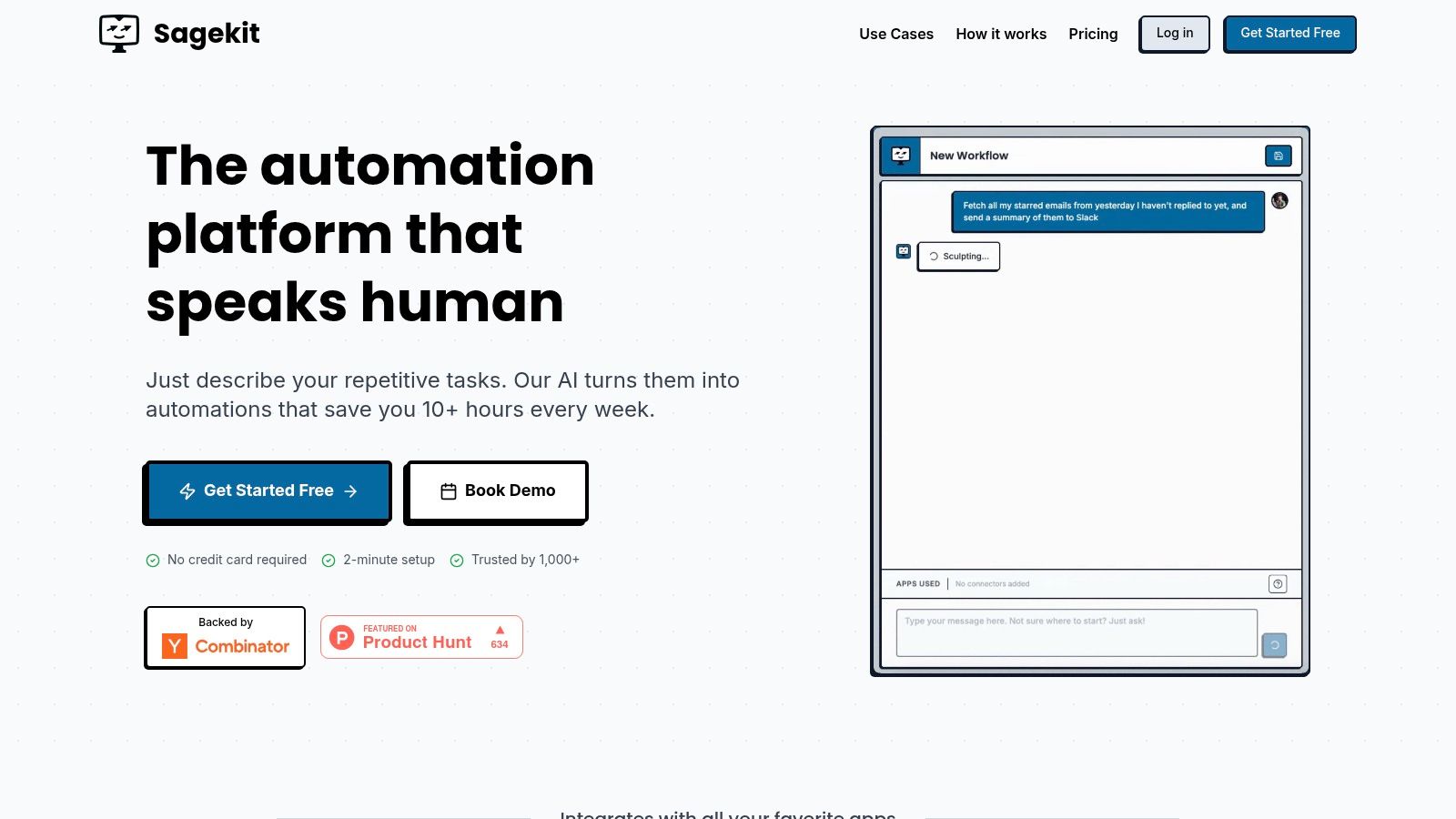
This intuitive process significantly lowers the technical barrier, empowering users to automate tasks that would otherwise require hours of manual effort or specialized knowledge. The platform excels at connecting disparate apps, making it ideal for managing client communications, aggregating data for reports, and streamlining content distribution pipelines. To stay ahead, consider leveraging cutting-edge AI knowledge management tools that integrate artificial intelligence for even smarter information handling, complementing the capabilities of tools like Sagekit.
Key Features & Use Cases
- Natural Language Automation: Simply describe your desired workflow, and the AI builds it for you. This is a game-changer compared to traditional visual builders, as you can see in this comparison of Sagekit vs. Make.
- Time Savings: Automates repetitive tasks like lead data entry from web forms, daily meeting prep summaries, and cross-posting content, saving freelancers an average of 10+ hours per week.
- Transparent Process: The visual canvas shows the workflow being built as you type, providing clarity and control over the automation process.
Pricing & Drawbacks
Sagekit offers a generous Free plan with 200 automation runs per month and unlimited workflows, making it a risk-free entry point. Paid plans unlock higher run limits and advanced features. The primary limitation is that highly niche or complex automations might still need minor manual adjustments on the visual canvas after the initial AI build, and the Free tier’s run limit may be restrictive for power users.
Website: https://sagekit.com
2. Notion
Notion is the ultimate all-in-one workspace, acting as a digital Swiss Army knife for freelancers. It replaces fragmented tools like Google Docs, Trello, and basic CRMs by combining notes, tasks, wikis, and databases into a single, interconnected system. This flexibility makes it one of the best productivity tools for freelancers managing everything from client project dashboards to personal content calendars.
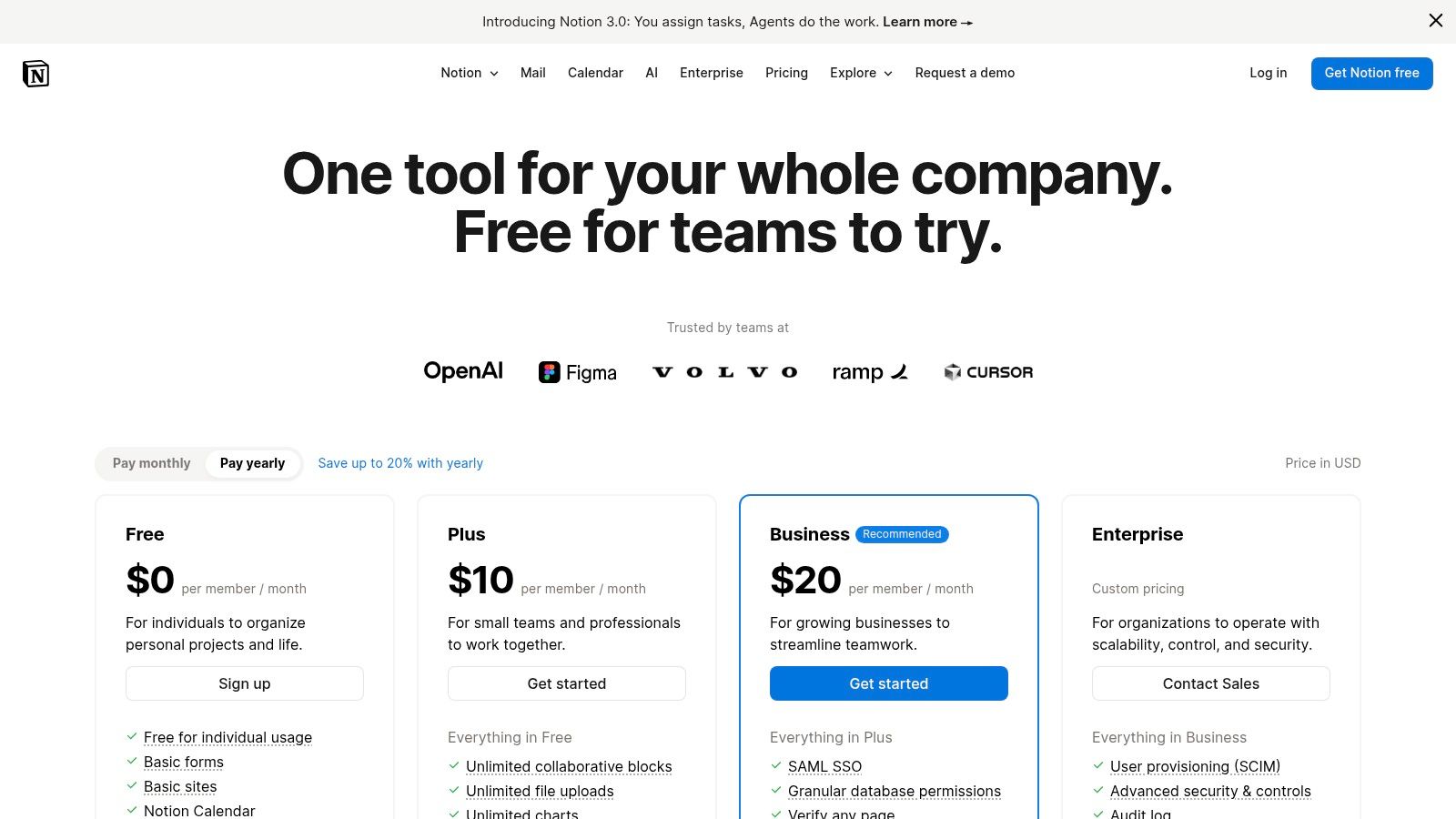
Key Features & Use Cases
A freelancer can build a client portal with shared project timelines, deliverable trackers, and embedded documents, providing a professional and transparent experience. The database feature, with its multiple views (kanban, calendar, timeline), is perfect for visualizing workflows. To further enhance your digital workspace, consider exploring a comprehensive guide to mastering Notion AI, which can automate summaries and streamline research.
Pricing and Limitations
- Free Tier: Generous for individuals, offering unlimited blocks for personal use.
- Plus Plan ($8/user/month): Unlocks unlimited file uploads and a 30-day page history.
- Business Plan ($15/user/month): Adds advanced security and admin tools.
Pros: Its incredible customizability allows you to build a system perfectly tailored to your workflow. The free tier is robust enough for most solo freelancers.
Cons: The learning curve can be steep, and setting up an effective system takes time. Performance can lag on extremely large databases, and offline functionality is limited.
Website: notion.so/pricing
3. Trello (Atlassian)
Trello is a highly visual and intuitive Kanban-based project management tool that excels at simplifying complex workflows. For freelancers, it serves as an ideal command center for tracking client projects, managing content pipelines, and visualizing sales funnels. Its drag-and-drop card system makes it incredibly easy to move tasks through different stages, offering a clear, at-a-glance overview of what’s in progress, what’s next, and what’s complete.
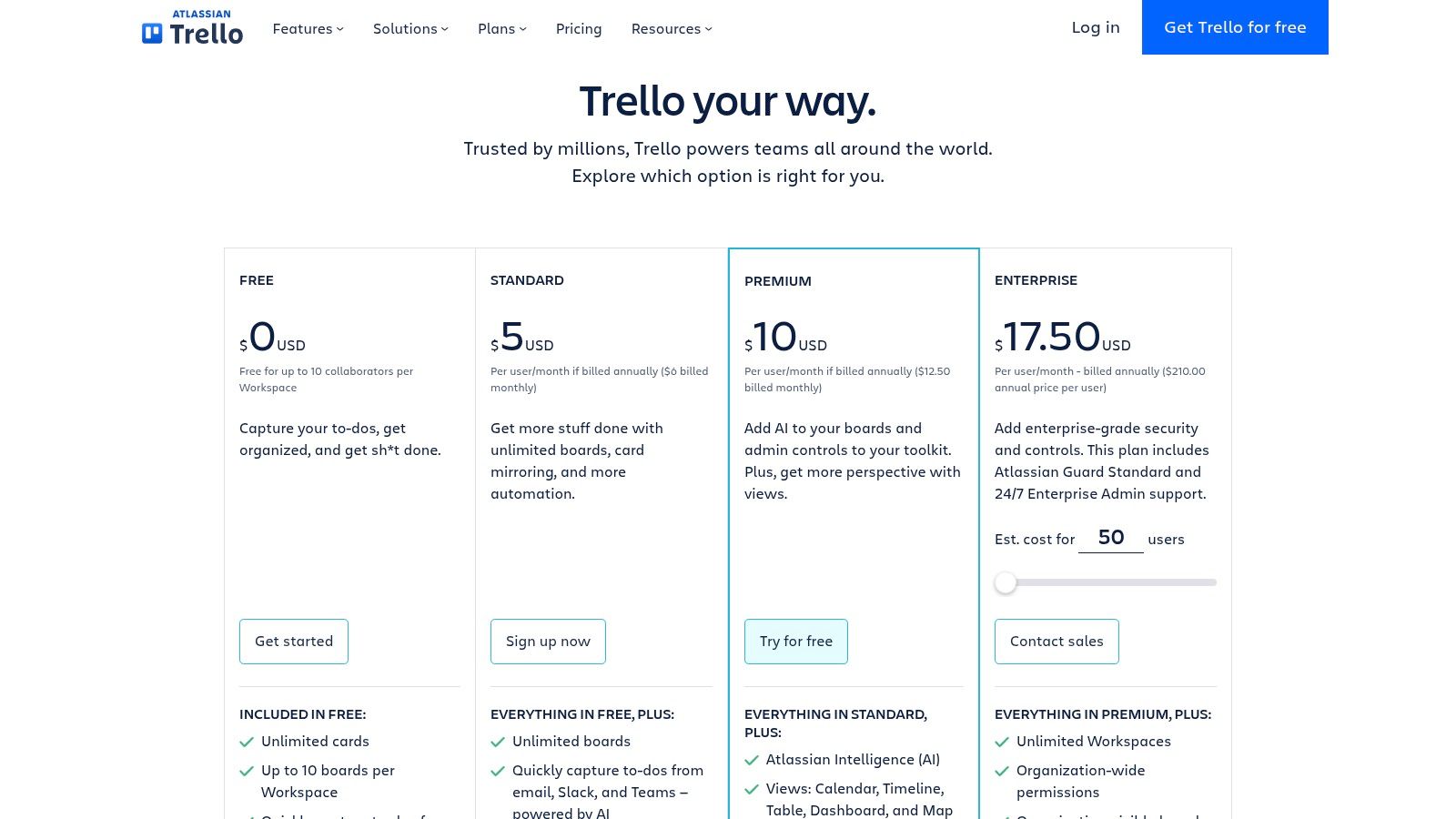
Key Features & Use Cases
A freelancer can set up a unique board for each client, using lists like “To Do,” “In Progress,” and “Awaiting Feedback” to manage deliverables. Cards can hold checklists, attachments, and due dates, while integrations with tools like Slack and Google Drive keep all project assets connected. Recent features like the Planner calendar view and an AI-assisted Inbox for capturing tasks from emails further solidify its position among the top productivity tools for freelancers.
Pricing and Limitations
- Free Tier: Offers up to 10 boards per workspace, with unlimited cards.
- Standard ($5/user/month): Unlocks unlimited boards and advanced checklists.
- Premium ($10/user/month): Adds multiple views (Calendar, Timeline, Map) and more automations.
Pros: The learning curve is exceptionally low, allowing for immediate adoption. Its visual approach provides a great project overview, and the free plan is very capable for solo use.
Cons: Lacks built-in reporting and time-tracking features without using third-party add-ons (Power-Ups). It can feel too basic for freelancers managing complex, multi-layered projects that require portfolio-level views.
Website: https://trello.com/pricing
4. Todoist
Todoist is a streamlined, cross-platform task manager that excels at speed and reliability. For freelancers juggling multiple clients and deadlines, it serves as a central nervous system for capturing tasks instantly and organizing them logically. Its clean interface avoids the complexity of larger project management systems, making it one of the most efficient productivity tools for freelancers focused on pure task execution and daily planning.
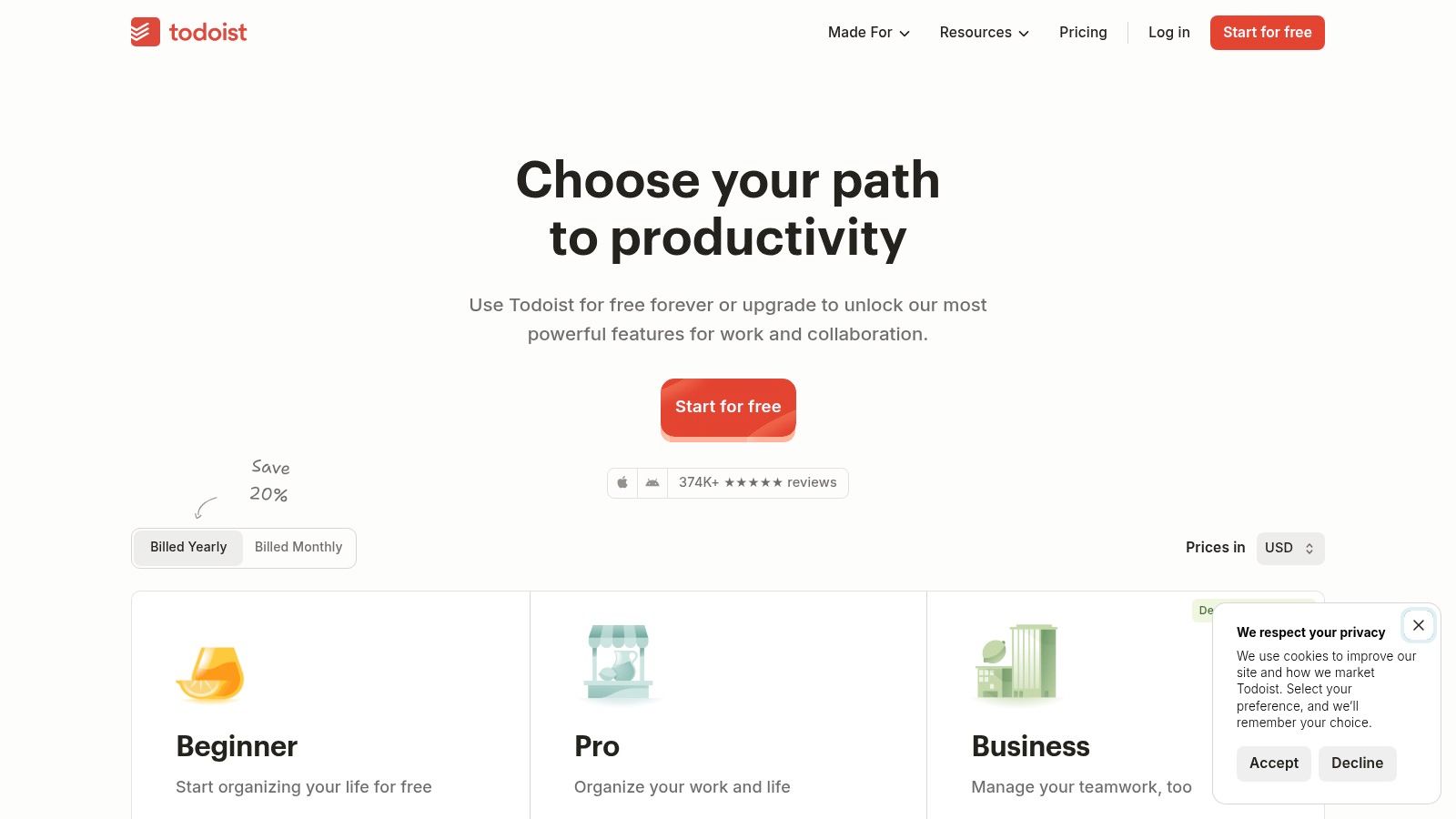
Key Features & Use Cases
The natural-language input is a major benefit; typing “Send invoice to Client X every last Friday of the month” automatically creates a recurring task with the correct due date. Freelancers can create shared projects to give clients visibility on progress, allowing them to comment and attach files directly to tasks. The AI Assistant feature further enhances productivity by helping break down large projects into manageable steps or drafting task lists.
Pricing and Limitations
- Free Tier: Up to 5 personal projects and 5 MB file uploads.
- Pro Plan ($4/month): Unlocks 300 projects, reminders, and a full activity history.
- Business Plan ($6/user/month): Adds team inboxes and admin/member roles.
Pros: The mobile and desktop sync is nearly instantaneous and exceptionally stable. Its pricing is highly accessible, and the Pro plan offers powerful features for solo freelancers without a high cost.
Cons: It lacks the deep portfolio reporting and resource management found in more complex project suites. Customer support is limited to documentation and a community forum, with no live chat or phone options.
Website: https://www.todoist.com/pricing
5. Toggl Track
Toggl Track is an essential, straightforward time-tracking tool that helps freelancers understand where their most valuable resource, time, is actually going. Its simplicity is its greatest strength, offering a frictionless way to start and stop timers for different clients and projects. This accurate data is crucial for creating precise invoices, analyzing project profitability, and making informed decisions about which clients are most lucrative, making it one of the most practical productivity tools for freelancers.
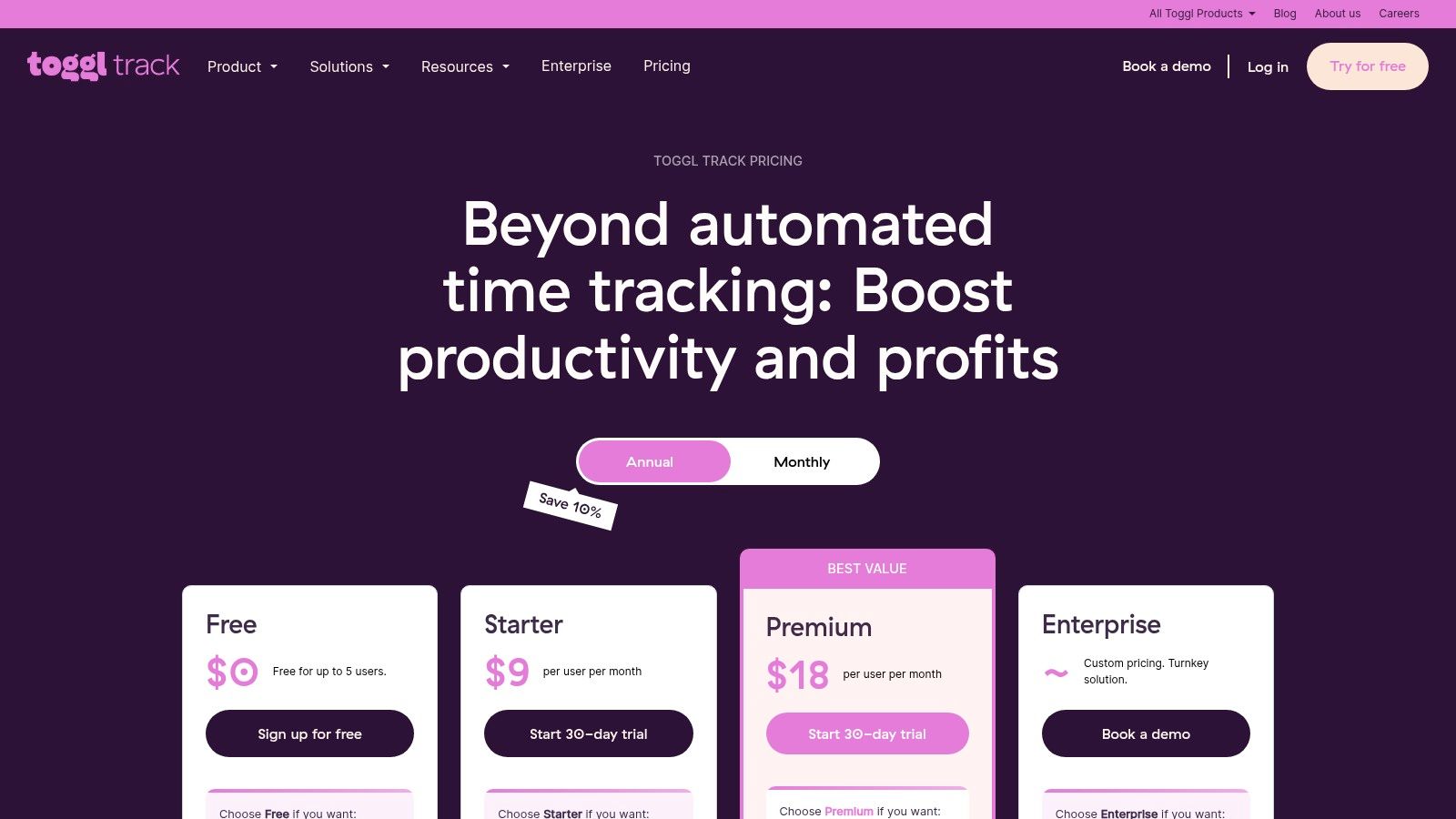
Key Features & Use Cases
A freelancer can use the one-click timer across web, desktop, and mobile apps to effortlessly log hours. By assigning billable rates to specific projects, you can generate clean, professional reports ready for invoicing. The calendar integration helps you turn scheduled events into time entries, ensuring no billable moment is missed, while its browser extensions integrate tracking directly into tools like Asana, Jira, and Trello.
Pricing and Limitations
- Free Tier: Excellent for solo users, supporting up to 5 users with unlimited time tracking, projects, and clients.
- Starter Plan ($9/user/month): Adds billable rates, time estimates, and project alerts.
- Premium Plan ($18/user/month): Includes team time tracking features, scheduled reports, and project forecasts.
Pros: The free plan is incredibly generous and sufficient for most individual freelancers. It’s extremely easy to set up and use, and the reports are clear and easily exportable for billing.
Cons: Advanced administrative features and approval workflows are locked behind higher-priced tiers. The per-user pricing can become costly if you start collaborating with a team.
Website: https://toggl.com/track/pricing/
6. FreshBooks
FreshBooks is an accounting and invoicing software designed specifically for the needs of service-based freelancers and small business owners. It simplifies the entire financial management process, from sending professional proposals and estimates to tracking time, logging expenses, and accepting online payments. By streamlining these administrative tasks, FreshBooks stands out as one of the essential productivity tools for freelancers who need to spend less time on bookkeeping and more time on billable work.
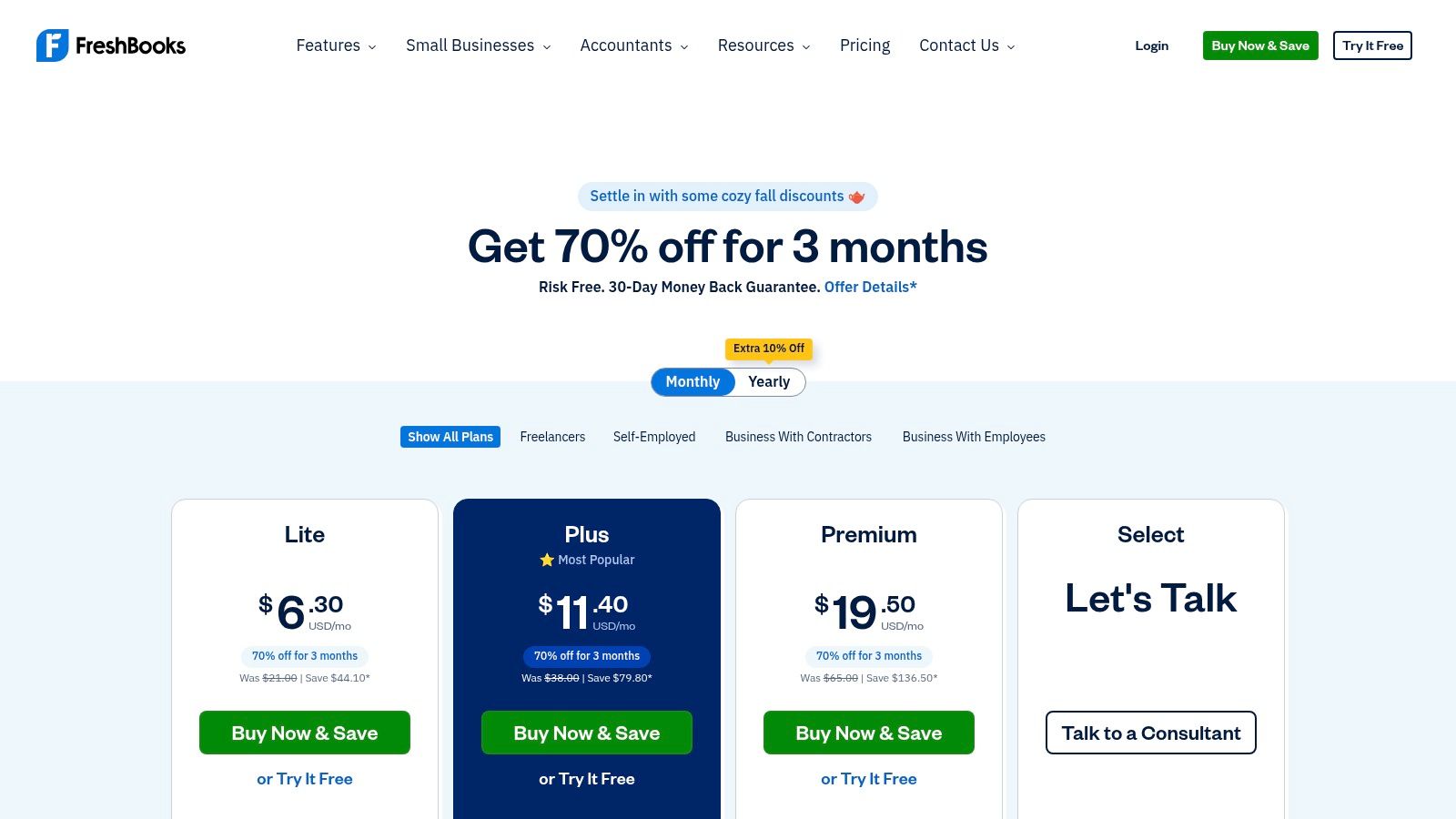
Key Features & Use Cases
A freelancer can use FreshBooks to create and send customized invoices in minutes, set up recurring billing for retainer clients, and automatically send late payment reminders. Its integrated time tracker allows you to log hours directly against projects, ensuring every minute is accounted for and easily added to an invoice. For deeper insights into managing your freelance finances, you can explore resources that complement the features of FreshBooks.
Pricing and Limitations
- Lite Plan ($19/month): For freelancers with up to 5 billable clients.
- Plus Plan ($33/month): Supports up to 50 billable clients and adds more automation.
- Premium Plan ($60/month): For growing businesses with unlimited clients.
Pros: The user-friendly interface is incredibly intuitive, even for those with no accounting background. Its award-winning customer support and 30-day money-back guarantee provide peace of mind.
Cons: The primary limitation is the cap on billable clients in the lower-tier plans. Add-ons like advanced payments and payroll come at an extra cost, which can increase the overall price.
Website: https://www.freshbooks.com/pricing
7. Wave
Wave offers a surprisingly robust and budget-friendly solution for invoicing and bookkeeping, making it one of the most accessible productivity tools for freelancers just starting out. It simplifies financial management by consolidating unlimited invoicing, expense tracking, and basic accounting into a single platform. This focus on core financial tasks helps freelancers manage cash flow effectively without the intimidating complexity or upfront cost of more advanced accounting software.
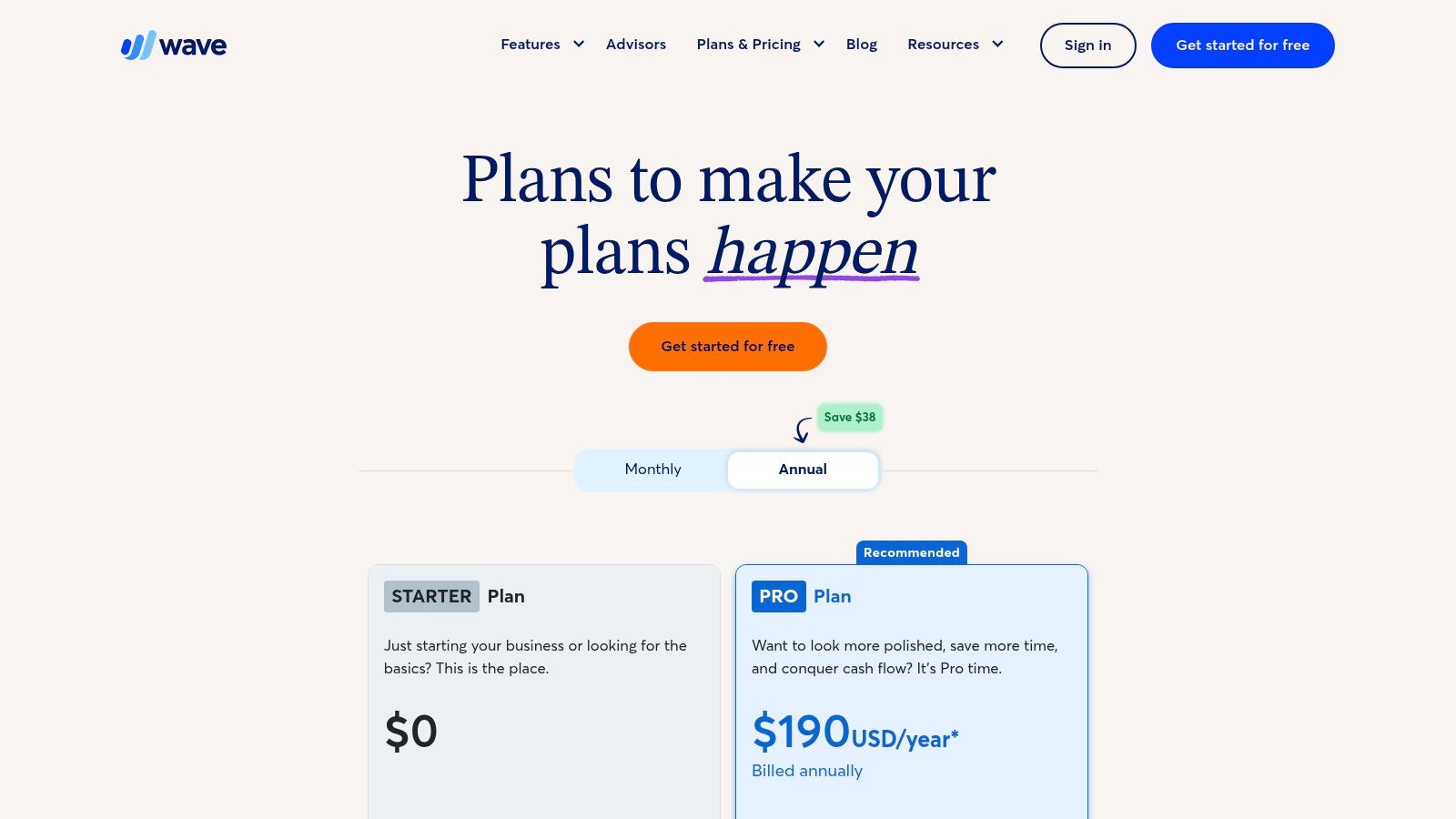
Key Features & Use Cases
Freelancers can create and send professional, customized invoices and estimates, and accept online payments directly through the platform (with standard transaction fees). The mobile app allows for on-the-go invoicing and receipt scanning, perfect for capturing expenses immediately. As your business grows, you can connect your bank account to automate transaction imports, which significantly reduces manual data entry and simplifies tax preparation.
Pricing and Limitations
- Starter Plan ($0/month): Includes unlimited customizable invoicing, accounting, and expense tracking.
- Pro Plan ($16/month): Adds automated bank transaction importing, receipt scanning, and other time-saving features.
- Payments: Transaction-based fees (e.g., 2.9% + $0.60 for most credit cards).
Pros: The completely free Starter plan is perfect for new or budget-conscious freelancers. Its user-friendly interface makes basic bookkeeping less daunting.
Cons: Key automation features like bank feeds and receipt capture are now behind the Pro paywall. Automated payroll services are limited to specific states in the U.S.
Website: waveapps.com/pricing
8. Google Workspace
Google Workspace is the foundational business suite that brings professionalism and collaborative power to a freelancer’s operations. It centralizes essential tools like Gmail with custom domains, Google Drive for cloud storage, and the Docs/Sheets/Slides trio for content creation, making it a reliable hub for client communication and file management. Its universal adoption ensures seamless collaboration, solidifying its place among the best productivity tools for freelancers.
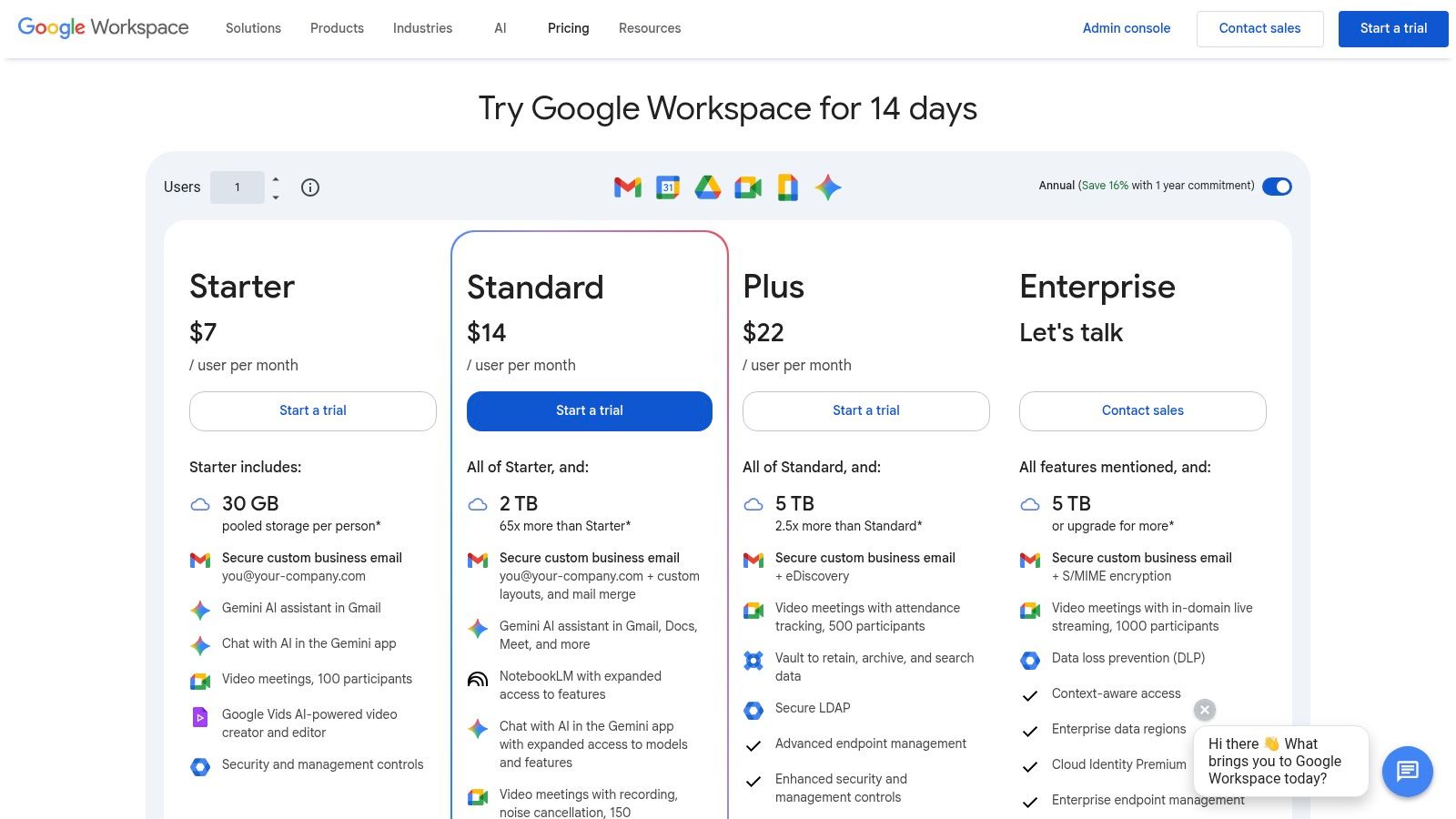
Key Features & Use Cases
A freelancer can use a custom domain email (e.g., contact@yourname.com) for a polished, professional image. Shared Drives facilitate secure, organized file sharing with clients, eliminating version control issues. Furthermore, Google Meet allows for easy video conferencing, while the integrated Gemini AI can draft emails, summarize documents, and generate ideas, significantly speeding up administrative tasks.
Pricing and Limitations
- Business Starter ($6/user/month): 30 GB of storage per user and a custom business email.
- Business Standard ($12/user/month): Increases storage to 2 TB per user and adds meeting recordings.
- Business Plus ($18/user/month): Boosts storage to 5 TB and enhances security features.
Pros: The tools are widely known, requiring virtually no learning curve for clients. The suite scales effectively from a solo freelancer to a small team with robust administrative controls.
Cons: The per-user monthly fees can become costly if you need to add collaborators to your workspace. Heavy file users might find the pooled storage on standard plans requires purchasing add-ons.
Website: workspace.google.com/pricing/
9. Setapp (Mac + iOS app bundle)
Setapp is like a “Netflix for Mac apps,” offering freelancers a single subscription to a curated library of over 240 premium applications. Instead of purchasing multiple tools individually, users get access to everything from advanced writing apps and time trackers to powerful utilities and project managers. This bundle approach makes it one of the most cost-effective productivity tools for freelancers deeply invested in the Apple ecosystem.
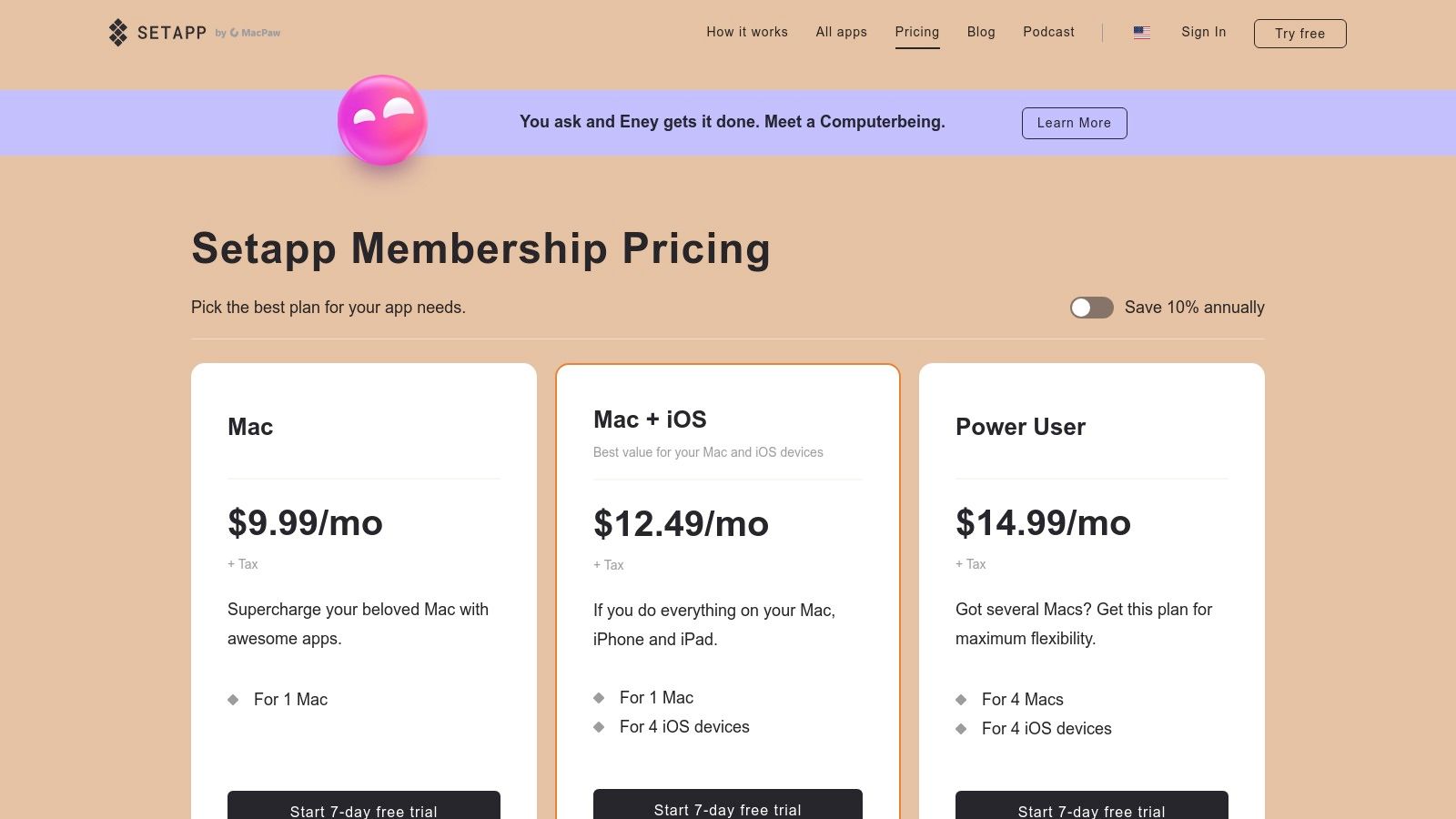
Key Features & Use Cases
A freelance writer could use Ulysses for distraction-free drafting, while a designer leverages CleanShot X for creating pristine screenshots and annotations. Meanwhile, a consultant might use the Timing app to automatically track billable hours across different projects without manual start/stop timers. Setapp simplifies tool acquisition, ensuring you always have the right app for the job without facing another paywall, all managed through a single, simple interface.
Pricing and Limitations
- Mac Plan ($9.99/month): Access to all Mac apps on one device.
- Mac + iOS Plan ($12.49/month): Unlocks apps on one Mac and all your iOS devices.
- Power User Plan ($14.99/month): Use on up to four Macs and all your iOS devices.
Pros: It provides incredible value if you regularly use even two or three of its premium apps. The unified subscription model simplifies licensing and guarantees you always have the latest, ad-free versions.
Cons: Its utility is limited strictly to the Mac and iOS ecosystem. The app catalog can change, with apps occasionally being added or removed, which might disrupt an established workflow.
Website: https://setapp.com/pricing
10. Zapier
Zapier is the glue that connects the internet, an essential no-code automation platform for freelancers looking to eliminate repetitive, manual tasks. It connects thousands of apps-like Gmail, Slack, and Stripe-allowing you to build automated workflows (called “Zaps”) without writing a single line of code. For busy freelancers, this means more time spent on billable work and less on administrative overhead, making it one of the most powerful productivity tools for freelancers available.
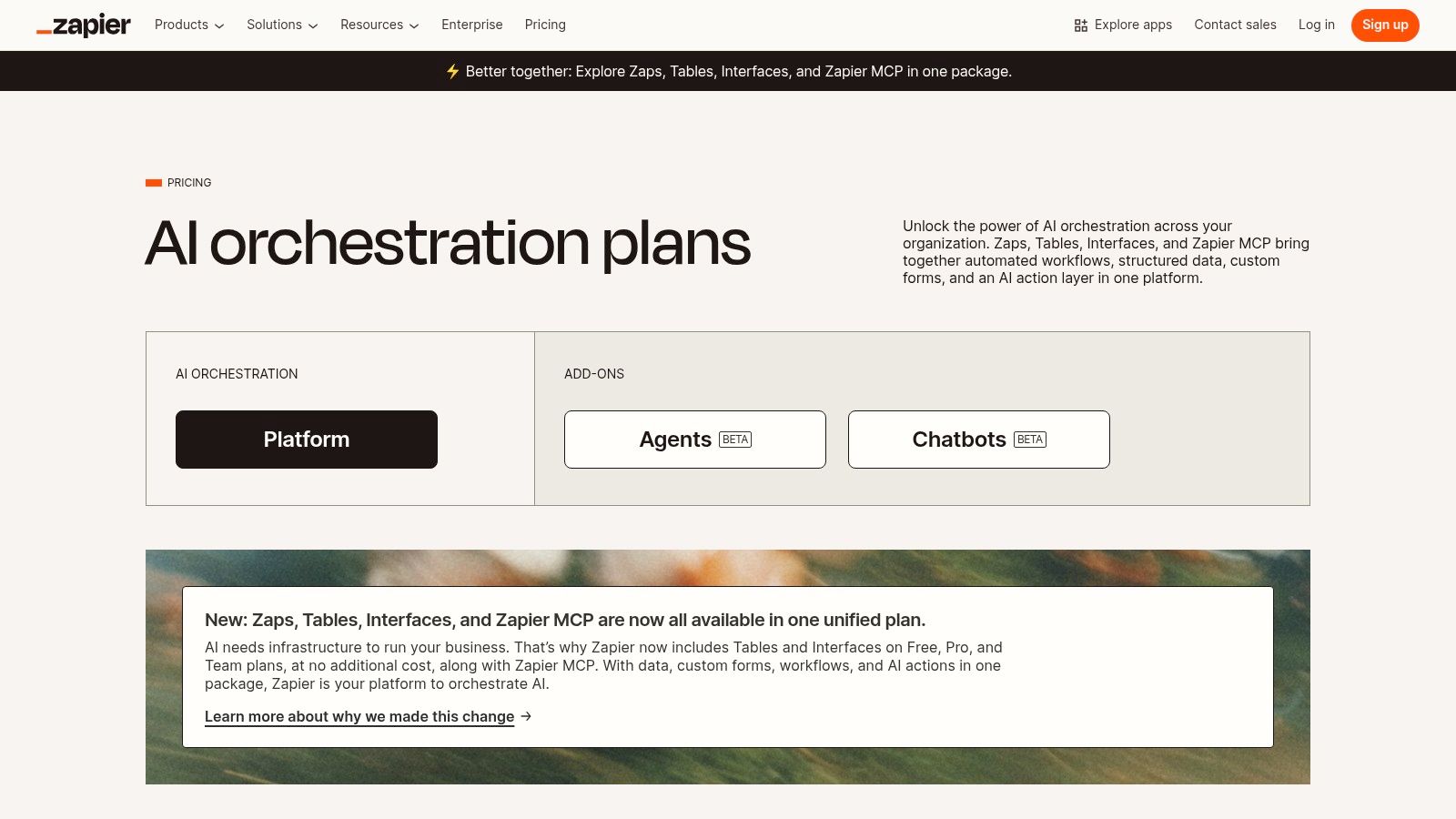
Key Features & Use Cases
A freelancer can automate their entire lead capture and onboarding process. For instance, a new form submission on your website could automatically create a new client in your CRM, generate a project folder in Google Drive, and send a welcome email. Its multi-step Zaps, which use filters and paths, allow for complex logic, such as routing high-value leads directly to your priority inbox. For those weighing different automation tools, a detailed Zapier comparison can highlight its specific strengths.
Pricing and Limitations
- Free Plan: Offers 5 single-step Zaps and 100 tasks per month.
- Starter Plan ($19.99/month): Unlocks multi-step Zaps and 750 tasks.
- Professional Plan ($49/month): Adds unlimited Zaps and advanced features like Paths.
Pros: The massive ecosystem of app integrations is unparalleled, and its user-friendly interface makes building basic automations simple. The flexibility of the platform can dramatically reduce manual data entry.
Cons: Costs can escalate quickly as your task volume increases, and the tiered plan structure can be confusing to navigate. While a recent security incident was reported in early 2025, no production systems were affected.
Website: https://zapier.com/pricing
11. AppSumo (deals marketplace)
AppSumo is a digital marketplace that offers freelancers a unique opportunity to acquire premium software at a fraction of the cost. Instead of being a single tool, it’s a treasure trove of lifetime deals (LTDs) and deep discounts on emerging productivity tools for freelancers, from project management systems to AI writing assistants. This makes it an essential stop for building a powerful, cost-effective software stack without committing to recurring monthly subscriptions.
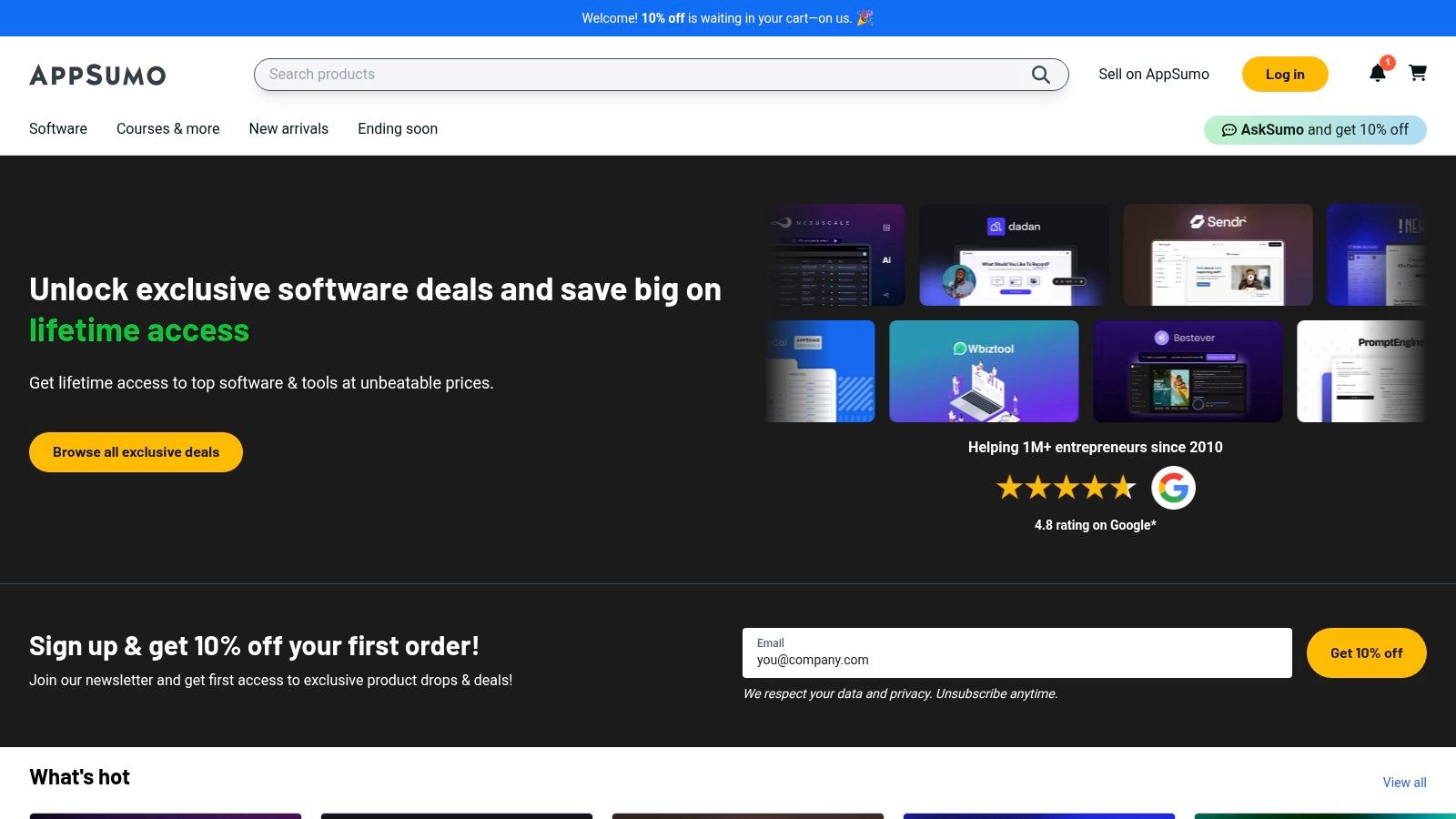
Key Features & Use Cases
A freelancer can discover and purchase a little-known but powerful CRM or social media scheduler for a one-time fee, permanently lowering their overhead. The platform’s value lies in exploration; browsing the deals can introduce you to niche tools perfectly suited for your workflow that you wouldn’t otherwise find. The active Q&A sections and user reviews are crucial for vetting each offer before purchasing.
Pricing and Limitations
- Deals: Prices vary significantly, from freebies to several hundred dollars for robust LTDs.
- AppSumo Plus ($99/year): Offers 10% off purchases, access to exclusive deals, and other member perks.
- Refund Policy: Most deals come with a 60-day money-back guarantee, allowing you to test software risk-free.
Pros: The potential for massive long-term savings is unparalleled. It’s a fantastic platform for discovering innovative and specialized productivity tools before they become mainstream.
Cons: The quality of deals is inconsistent, and some software may have limited support or be discontinued by the vendor. Diligent research into the product and its founding team is essential.
Website: appsumo.com
12. Airtable
Airtable elevates the humble spreadsheet into a powerful, relational database, making it an indispensable tool for freelancers who have outgrown basic organizational methods. It combines the familiarity of a spreadsheet with the complexity of a database, allowing you to build custom solutions for client management, project tracking, or content calendars without writing a single line of code. This flexibility makes it one of the top productivity tools for freelancers needing a centralized hub for their business operations.
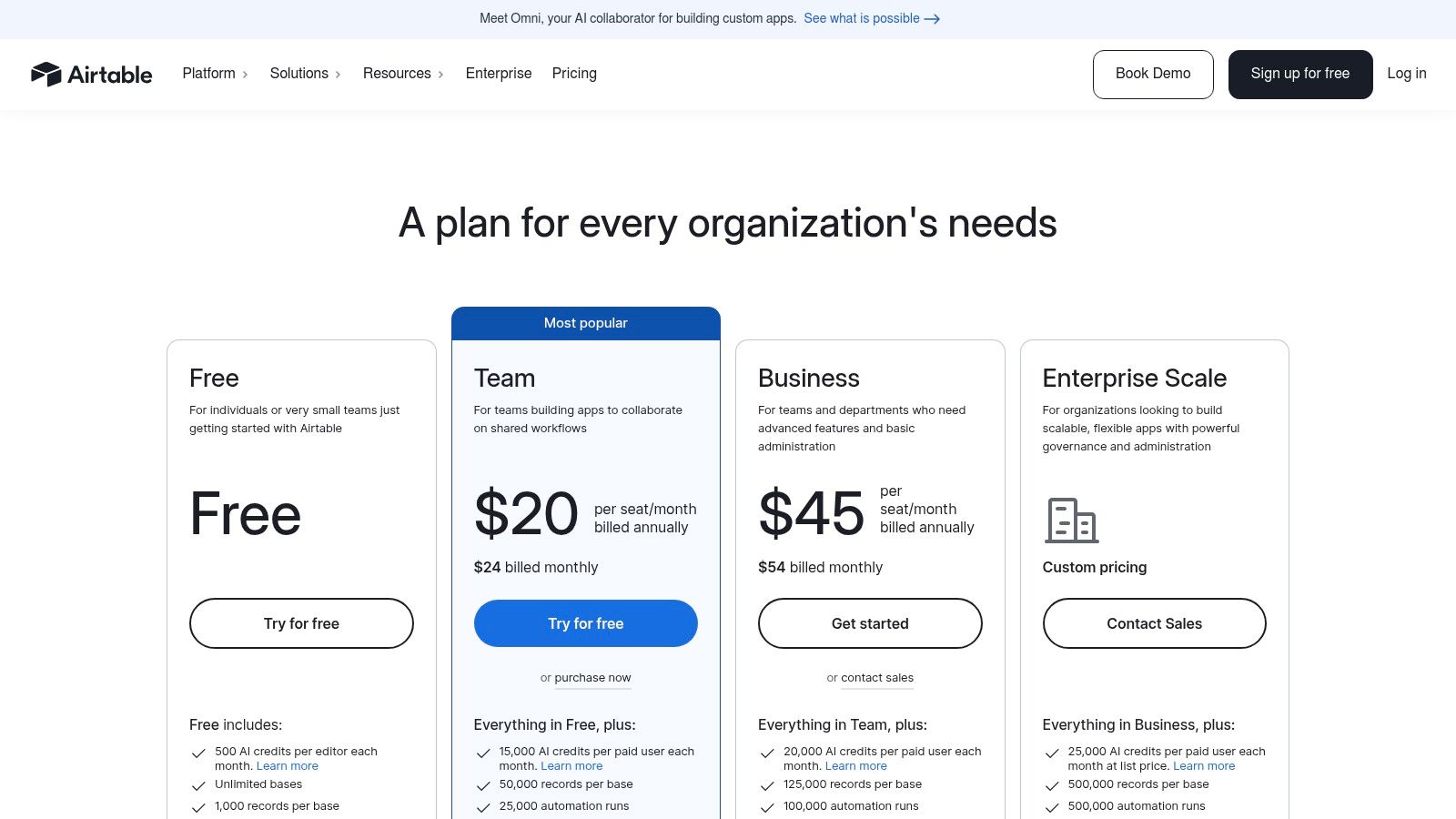
Key Features & Use Cases
A freelancer can use Airtable to create a simple yet powerful CRM, linking client records to specific projects, invoices, and communications. Its multiple views, such as Kanban, calendar, and timeline, provide different perspectives on the same data set, perfect for managing an editorial pipeline from idea to publication. The automation features can trigger notifications for deadlines or update records based on specific criteria, streamlining repetitive administrative tasks.
Pricing and Limitations
- Free: Includes unlimited bases, up to 1,000 records per base, and 1GB of attachments per base.
- Team ($20/user/month): Increases limits to 50,000 records and 20GB of attachments, adding more automations.
- Business ($45/user/month): Unlocks advanced features like timelines, Gantt charts, and enhanced admin controls.
Pros: It offers incredible customization and is ideal for building bespoke systems like a simple CRM or project tracker. Collaboration features are strong, even on lower-tier plans.
Cons: The pricing structure can be confusing, with many powerful features locked behind the more expensive Team and Business tiers. It can feel overly complex for managing simple to-do lists.
Website: airtable.com/pricing
Productivity Tools Comparison of 12 Freelance Solutions
| Product | Core Features/Capabilities | User Experience & Quality | Value & Pricing | Target Audience | Unique Selling Points |
|---|---|---|---|---|---|
| 🏆 Sagekit | AI-driven natural language workflow builder ✨ | ★★★★☆ Intuitive, visual canvas | 💰 Free tier (200 runs/mo), scalable | 👥 Freelancers to enterprises | ✨ Automations from plain English, instant/scheduled runs |
| Notion | Notes, databases, teamspaces, AI tools | ★★★★☆ Customizable, some complexity | 💰 Good free tier, flexible upgrades | 👥 Freelancers, small teams | ✨ All-in-one workspace replacing multiple apps |
| Trello (Atlassian) | Kanban boards, Slack/Google integrations, AI assist | ★★★★☆ Easy to learn, visual | 💰 Affordable entry, paid boards | 👥 Freelancers, small teams | ✨ Simple drag-drop with Power-Ups |
| Todoist | Natural language tasks, labels, AI assistant | ★★★★☆ Fast, stable sync | 💰 Clear Pro pricing | 👥 Freelancers, solo professionals | ✨ Quick task capture with AI support |
| Toggl Track | Time tracking, billable rates, calendar integration | ★★★★☆ Reliable, exportable reports | 💰 Strong free plan, paid tiers | 👥 Freelancers, small businesses | ✨ One-click timers + 100+ integrations |
| FreshBooks | Invoicing, accounting, client portal | ★★★★☆ User-friendly, strong support | 💰 Tiered, promotions & guarantee | 👥 Freelancers, very small businesses | ✨ Simple accounting for non-accountants |
| Wave | Invoicing, bookkeeping, mobile app | ★★★☆☆ Budget friendly | 💰 $0 Starter plan, pay per use | 👥 Early-stage freelancers | ✨ Free core features + à-la-carte upgrades |
| Google Workspace | Email, Drive, Docs, Gemini AI | ★★★★☆ Familiar tools, scalable | 💰 Per-user fees | 👥 Freelancers to small teams | ✨ Gemini AI + business suite integration |
| Setapp | Mac/iOS app bundle subscription | ★★★★☆ Great multi-app value | 💰 Single subscription for 240 apps | 👥 Mac & iOS users | ✨ Access to curated pro apps with simple licensing |
| Zapier | No-code multi-step automation, hundreds of apps | ★★★★☆ Vast integrations, flexible | 💰 Free to enterprise tiers | 👥 Freelancers, SMBs, enterprises | ✨ Broad app ecosystem + AI autonomous agents |
| AppSumo | Discounted SaaS deals marketplace | ★★★☆☆ Savings potential, variable quality | 💰 Lifetime deals & memberships | 👥 Freelancers seeking bargains | ✨ Access to emerging and niche tools |
| Airtable | Hybrid database + spreadsheet, automations | ★★★★☆ Powerful, customizable | 💰 Tiered pricing & team controls | 👥 Freelancers to teams | ✨ Lightweight custom internal apps and rich views |
Building Your Personal Productivity Engine
Navigating the landscape of productivity tools for freelancers can feel overwhelming, but the goal isn’t to master all twelve platforms we’ve explored. Instead, the real power lies in strategically curating a personalized system, your own productivity engine, that addresses your unique business bottlenecks. By thoughtfully selecting a few core applications, you can reclaim valuable time, reduce administrative friction, and dedicate your energy to the high-value work that truly matters.
The key is to begin with a clear diagnosis of your workflow. Don’t start by choosing a tool; start by identifying a problem. Are you spending hours manually updating project statuses, chasing down unpaid invoices, or struggling to keep track of client communication? The most effective productivity stack is one built with intention, where each component serves a distinct purpose.
From Individual Tools to an Integrated System
A common mistake is treating these tools as isolated islands. A Trello board is useful for tracking tasks, and FreshBooks is great for invoicing, but their true potential is unlocked when they work together. This is where automation platforms become the central nervous system of your freelance operation. A tool like Zapier or the more intuitive, natural-language-based Sagekit can act as the glue, connecting disparate apps and creating seamless workflows that run silently in the background.
Imagine this: a new client signs your proposal (via an e-signature tool), which automatically creates a new project in Notion, sets up a client folder in Google Drive, and generates the initial invoice in Wave. This isn’t a futuristic fantasy; it’s a practical, achievable system built by connecting the right productivity tools for freelancers.
How to Choose Your Starting Lineup
To build your initial toolkit, consider these three core areas of your freelance business:
- Project & Task Management: Do you need the visual simplicity of Trello’s Kanban boards, the structured power of Todoist’s lists, or the all-in-one “second brain” capabilities of Notion? Your choice here will become the command center for your client work.
- Financial & Time Tracking: Accurate time tracking with Toggl is non-negotiable for understanding profitability. Pair it with a dedicated accounting tool like FreshBooks or Wave to streamline invoicing and financial reporting, transforming a major administrative headache into a simple, automated process.
- Automation & Integration: This is the force multiplier. Start by identifying your single most repetitive, manual task. Could it be creating meeting summaries? Onboarding new clients? A platform like Sagekit is designed to handle these specific, high-frequency tasks with simple, text-based commands, serving as the perfect entry point into automation without a steep learning curve.
Ultimately, the perfect suite of productivity tools for freelancers is not a one-size-fits-all solution. It’s a dynamic, evolving system that grows with your business. Start small, focus on your biggest pain point first, and build from there. By making deliberate choices, you can construct a powerful, efficient, and automated engine that frees you to focus on what you do best: delivering exceptional work for your clients.
Ready to build the core of your automation engine? Sagekit empowers you to connect your apps and automate repetitive tasks using simple, natural language. Stop drowning in manual work and start building a smarter freelance business today. Explore what you can automate at Sagekit.